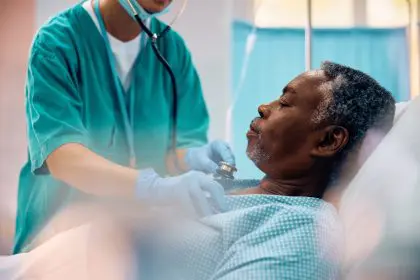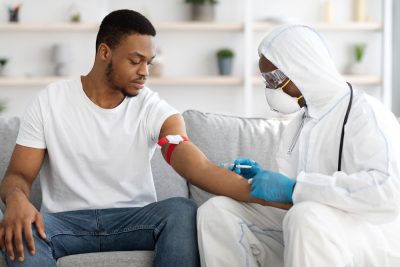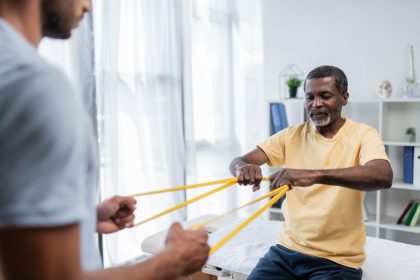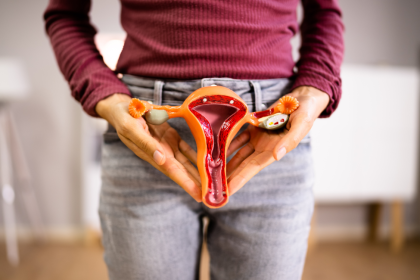That sudden, sharp pain in your inner thigh might be more than just a temporary discomfort. Groin strains represent one of the most common soft tissue injuries, particularly among those who participate in sports or activities requiring quick changes in direction. These injuries occur when the muscles connecting your thigh to your lower abdomen become overstretched or torn, resulting in pain that can range from mild to severe. Understanding the nature of these injuries, recognizing their symptoms, and knowing the appropriate treatment approaches can significantly impact recovery time and prevent future recurrences.
The anatomy behind the pain
The groin area contains five muscles collectively known as the adductors, which run along the inner thigh and attach to the pelvis. These muscles play a crucial role in stabilizing the hip joint and allowing for movements that bring the legs toward the body’s midline. When these muscles are subjected to excessive force or stretched beyond their capacity, the muscle fibers can develop small tears, leading to what we commonly call a groin strain or pull.
Medical professionals classify groin strains into three distinct categories based on severity. Grade 1 strains involve minor stretching or microscopic tearing of muscle fibers, resulting in mild discomfort but minimal functional loss. Grade 2 strains indicate moderate tearing of muscle fibers with noticeable pain and some functional limitations. Grade 3 strains, the most severe, involve complete tearing of muscle fibers or separation from their attachment point, causing significant pain and substantial functional impairment.
1. Sharp pain in the inner thigh area
The most obvious and immediate indicator of a groin strain is a sharp, sometimes stabbing pain in the inner thigh region. This pain typically appears suddenly during activity, often described as a “popping” or “tearing” sensation at the moment of injury. For grade 1 strains, the pain may be mild and primarily noticeable during specific movements. With grade 2 strains, the pain becomes more pronounced and may persist even during rest. Grade 3 strains produce severe, debilitating pain that significantly restricts movement.
What distinguishes groin strain pain from other types of discomfort is its specific location and how it responds to certain movements. The pain typically concentrates in the area where the inner thigh meets the pelvis, though it may radiate downward along the inner thigh. Actions that involve bringing the legs together, lifting the knee toward the chest, or moving the leg across the body typically intensify the pain. For athletes, movements like kicking, changing direction while running, or jumping often trigger sharp increases in discomfort.
The timing of pain can also provide diagnostic clues. While the most intense pain usually occurs immediately after injury, many individuals experience a secondary pain peak approximately 24-48 hours later as inflammation fully develops in the affected area. This delayed pain response sometimes leads people to underestimate the severity of their injury initially.
2. Limited mobility and weakness
Following a groin strain, many individuals notice a sudden decrease in their ability to move the affected leg normally. This mobility restriction stems from both pain and the mechanical limitations caused by damaged muscle fibers. Simple movements like bringing the legs together, climbing stairs, getting in and out of vehicles, or even walking may become challenging or painful.
The degree of mobility limitation correlates strongly with the strain’s severity. With mild strains, individuals might only notice restrictions during specific activities like running or stretching. Moderate strains typically affect everyday movements, making walking uncomfortable and athletic activities impossible. Severe strains can significantly impact basic mobility, sometimes making it difficult to bear weight on the affected leg.
Accompanying this reduced mobility is often a noticeable weakness in the affected muscles. Individuals may find they cannot generate normal force when attempting to squeeze their legs together or resist outward pressure applied to the inner thigh. This weakness results from both protective mechanisms (the body limiting force production to prevent further injury) and the actual mechanical impairment of the damaged muscle fibers.
3. Muscle spasms and tightness
Many people experiencing groin strains report involuntary muscle spasms in the affected area. These sudden, painful contractions occur as the body attempts to protect the injured region by increasing muscle tension. The spasms may appear unpredictably, sometimes triggered by specific movements and other times occurring spontaneously even during periods of rest.
Beyond acute spasms, a persistent sensation of tightness or tension often develops in the injured area. This tightness can extend beyond the specific site of injury to include surrounding muscles that contract to stabilize and protect the damaged tissue. Many individuals describe feeling as though the muscle has “locked up” or become abnormally rigid, particularly after periods of inactivity like sitting or sleeping.
This muscular tightness often creates a frustrating cycle for those recovering from groin strains. The injured muscle tightens as a protective mechanism, but this increased tension can slow healing and increase discomfort. Managing this aspect of the injury through appropriate stretching and relaxation techniques (initiated at the proper stage of healing) plays an important role in successful recovery.
4. Swelling and bruising in severe cases
While not present in all cases, visible swelling and bruising can develop with moderate to severe groin strains. Swelling results from the inflammatory response, which increases blood flow and fluid accumulation in the injured area as part of the body’s natural healing process. This swelling may not be immediately apparent but typically develops within 24 hours of the injury.
Bruising indicates more significant damage to muscle tissue and surrounding blood vessels. When muscle fibers and capillaries tear, blood leaks into surrounding tissues, creating visible discoloration. This bruising may initially appear near the injury site in the groin region but can gradually spread downward along the inner thigh due to gravitational effects on escaped blood. The presence and extent of bruising often help healthcare providers assess injury severity.
The timing and progression of bruising can provide insight into the healing process. Fresh bruises typically appear reddish-purple, gradually changing to bluish-black before transitioning to green and yellow as healing progresses. Extensive or rapidly expanding bruising might indicate a more serious injury requiring medical evaluation.
5. Pain intensification during specific movements
A hallmark characteristic of groin strains is how certain movements dramatically increase pain levels. Activities that require adductor muscle engagement or stretching typically provoke the most discomfort. These movements include:
Side-to-side motions, particularly when changing direction while running Bringing the legs together against resistance Lifting the affected leg upward or across the body Getting in and out of low chairs or vehicles Climbing stairs, especially taking steps two at a time Stretching the inner thigh
For athletes, sport-specific movements often reveal functional limitations even after basic pain has subsided. Soccer players may notice pain during kicking motions, hockey players during skating strides, and runners when attempting to increase their pace or navigate uneven terrain. These movement-specific pain patterns help guide rehabilitation and return-to-activity decisions.
Many individuals also report increased pain during specific transitions, such as standing after prolonged sitting or initiating walking after a period of rest. This pattern, known as “startup pain,” occurs because inactive muscles stiffen and then must suddenly engage, stressing the injured tissue. This symptom often persists even after constant pain has subsided.
Treatment approaches for faster recovery
The foundation of effective groin strain treatment follows the principles of RICE therapy: Rest, Ice, Compression, and Elevation. During the acute phase (typically the first 48-72 hours), these measures help control inflammation and pain while creating optimal conditions for healing.
Rest involves avoiding activities that provoke pain, though complete immobilization is rarely recommended except in severe cases. Instead, relative rest—continuing gentle movement within pain-free ranges—helps maintain circulation and prevent excessive stiffening. Ice applications for 15-20 minutes several times daily help reduce inflammation and provide pain relief. Compression through supportive wraps or garments helps control swelling, while elevation of the affected area when possible further reduces fluid accumulation.
Over-the-counter pain medications, particularly nonsteroidal anti-inflammatory drugs (NSAIDs) like ibuprofen, can help manage pain and reduce inflammation during the early recovery stage. However, these medications should be used according to package instructions and medical advice, as prolonged use can have side effects and may potentially delay certain aspects of the healing process.
As acute symptoms subside, gentle stretching and strengthening exercises play a crucial role in recovery. These typically begin with isometric exercises (muscle contractions without movement) and gradually progress to dynamic movements as healing advances. Proper guidance from healthcare professionals helps ensure these exercises promote rather than hinder recovery.
Rehabilitation progression for complete healing
Effective rehabilitation follows a progressive approach that respects tissue healing timelines while gradually restoring function. The initial phase focuses on protecting the injured tissue while managing pain and inflammation. During this period, which typically lasts 3-7 days, activities are limited to gentle, pain-free movements.
The intermediate phase begins as acute pain subsides, usually around the one-week mark for mild to moderate strains. This phase introduces more deliberate stretching and controlled strengthening exercises. Static stretches for the adductor muscles, performed carefully and without bouncing, help restore flexibility. Strengthening typically begins with isometric holds and gradually progresses to exercises using light resistance.
The advanced rehabilitation phase focuses on functional restoration and typically begins 2-4 weeks after injury, depending on severity. This phase incorporates more dynamic movements, including controlled lunges, side-stepping with resistance bands, and eventually sport-specific motions. Balance exercises are often included to restore proprioception (positional awareness) that may have been compromised by the injury.
For athletes or highly active individuals, a final return-to-activity phase helps bridge the gap between clinical recovery and full functional restoration. This phase incorporates progressive activity-specific drills, gradually increasing in intensity and complexity. Successful completion of this phase without symptom recurrence indicates readiness to resume normal activities.
When to seek professional medical care
While mild groin strains often respond well to home treatment, certain situations warrant professional medical evaluation. Individuals should seek care if:
Pain is severe, preventing weight-bearing or basic movements Symptoms fail to improve after 7-10 days of home treatment Pain recurs immediately upon returning to activities Significant swelling, bruising, or a visible deformity develops The injury resulted from a traumatic impact rather than a pulled muscle Fever, redness, or warmth develops around the injury site
Healthcare providers may use imaging studies such as ultrasound or MRI to assess the extent of tissue damage, particularly in cases where symptoms are severe or not improving as expected. These imaging techniques help differentiate groin strains from other conditions that can cause similar symptoms, including sports hernias, hip joint injuries, or stress fractures.
For severe grade 3 strains or complete muscle tears, surgical intervention may occasionally be necessary, particularly for competitive athletes or when conservative treatments fail to produce improvement. However, the vast majority of groin strains respond successfully to properly managed conservative care.
Prevention strategies for at-risk individuals
Preventing groin strains begins with understanding risk factors and implementing appropriate preventive strategies. Dynamic warm-up routines that gradually prepare the muscles for activity play a crucial role in prevention. These warm-ups should include movements that progressively increase in intensity and specifically target the hip and groin muscles.
Strengthening exercises for the adductor muscles help build resilience against injury. Exercises like side-lying leg raises, sumo squats, and adductor ball squeezes can increase muscle strength and stability. Equally important is maintaining balanced strength between the inner thigh adductors and outer thigh abductors, as imbalances between these muscle groups increase injury risk.
Flexibility work targeting the entire hip region helps ensure muscles can accommodate the demands placed upon them. Regular stretching of the adductors, hip flexors, and hamstrings improves overall mobility and reduces strain during activity. This flexibility work proves most effective when performed both after warm-up and following activity completion.
For athletes in high-risk sports like soccer, hockey, or football, specialized prevention programs that combine strengthening, flexibility, and proprioceptive training have shown significant success in reducing groin injury rates. These structured programs, when implemented consistently, can substantially lower injury risk while potentially improving performance.
Groin strains, while common and sometimes frustrating, respond well to appropriate treatment and rehabilitation approaches. Understanding the nature of these injuries, recognizing their key symptoms, and implementing effective recovery strategies can significantly reduce recovery time and minimize the risk of recurrence. With patience and proper care, most individuals can expect complete recovery and a successful return to their normal activities.















